paleomaxx
Hero Member
- Joined
- Aug 14, 2016
- Messages
- 841
- Reaction score
- 6,888
- Golden Thread
- 6
- Location
- Upstate, NY
- 🥇 Banner finds
- 6
- Detector(s) used
- Deus XP
- Primary Interest:
- All Treasure Hunting
I once again had several free days this past weekend and despite the single digits I wasn't about to waste some rare time off. It was 5 degrees out and the ground has started to freeze despite the snow and leaves; however I found that in most spots I could break through the frozen layer and I didn't have to skip any signals. I doubt that'll be the case for much longer though and the cold limited my hunt to just a few hours, but even with that small window I managed a number of keepers. For starters I finally found a coin!
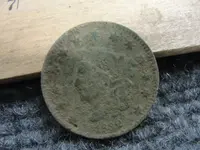
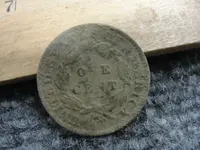
It's a beautiful 1832 large cent and I've only done a light first-pass cleaning, but the details are excellent. I typically start with this sort of cleaning and make sure it isn't a key date or rare variety before I attempt something more aggressive. It looks like light tooth-picking and peroxide should be sufficient to finish and give it great contrast for display.
I did find a second coin during this hunt and I must say that I'm quite surprised. I honestly have no idea how this ended up next to this cellar hole, but I'm sure it was an interesting story.
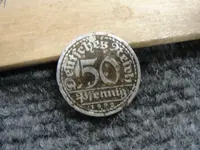
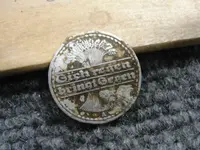
It's a German 1922 50 pfennig coin made out of aluminum. The "A" on the reverse means it was minted in Berlin. What's surprising is that there is very little modern contamination at this site and until now that was limited to the standard shotgun headstamps and the odd bullet. It's possible a hunter dropped this coin too, but what it was doing in their pocket is an intriguing mystery.
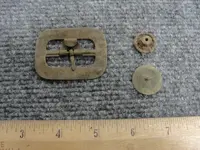
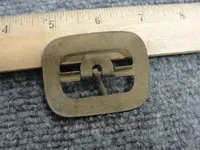
There were a few other non-ferrous relics including another flat button and this very interesting brass buckle. I've never found this style before and I'm not even sure what it was used for. Any thoughts?
There were a few good iron relics as well, although much less than with the first few passes.
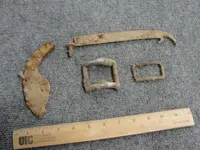
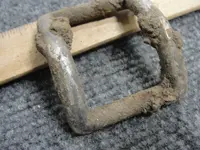
This ox shoe is the fifth from this site. The larger iron buckle is very interesting as it looks like it was silver washed, but only along the top half of the iron. There's no trace of a bar across the middle and the degree of bend is very similar to some of the colonial artois buckles I've seen. It's super thick and heavy though so I can't imagine it would have been comfortable on a shoe. Perhaps I'm wrong though; have any of you colonial hunters seen a shoe buckle like this before?
The deep cold up here continues, so I don't think I have too many more hunts before a thaw will be necessary, but hopefully I have a few more hunts left before spring. This site is amazing so far and I can't wait to see what else is hiding in the ground!
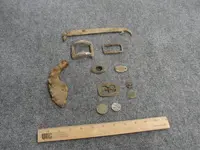


It's a beautiful 1832 large cent and I've only done a light first-pass cleaning, but the details are excellent. I typically start with this sort of cleaning and make sure it isn't a key date or rare variety before I attempt something more aggressive. It looks like light tooth-picking and peroxide should be sufficient to finish and give it great contrast for display.
I did find a second coin during this hunt and I must say that I'm quite surprised. I honestly have no idea how this ended up next to this cellar hole, but I'm sure it was an interesting story.


It's a German 1922 50 pfennig coin made out of aluminum. The "A" on the reverse means it was minted in Berlin. What's surprising is that there is very little modern contamination at this site and until now that was limited to the standard shotgun headstamps and the odd bullet. It's possible a hunter dropped this coin too, but what it was doing in their pocket is an intriguing mystery.



There were a few other non-ferrous relics including another flat button and this very interesting brass buckle. I've never found this style before and I'm not even sure what it was used for. Any thoughts?
There were a few good iron relics as well, although much less than with the first few passes.


This ox shoe is the fifth from this site. The larger iron buckle is very interesting as it looks like it was silver washed, but only along the top half of the iron. There's no trace of a bar across the middle and the degree of bend is very similar to some of the colonial artois buckles I've seen. It's super thick and heavy though so I can't imagine it would have been comfortable on a shoe. Perhaps I'm wrong though; have any of you colonial hunters seen a shoe buckle like this before?
The deep cold up here continues, so I don't think I have too many more hunts before a thaw will be necessary, but hopefully I have a few more hunts left before spring. This site is amazing so far and I can't wait to see what else is hiding in the ground!

Upvote
33





